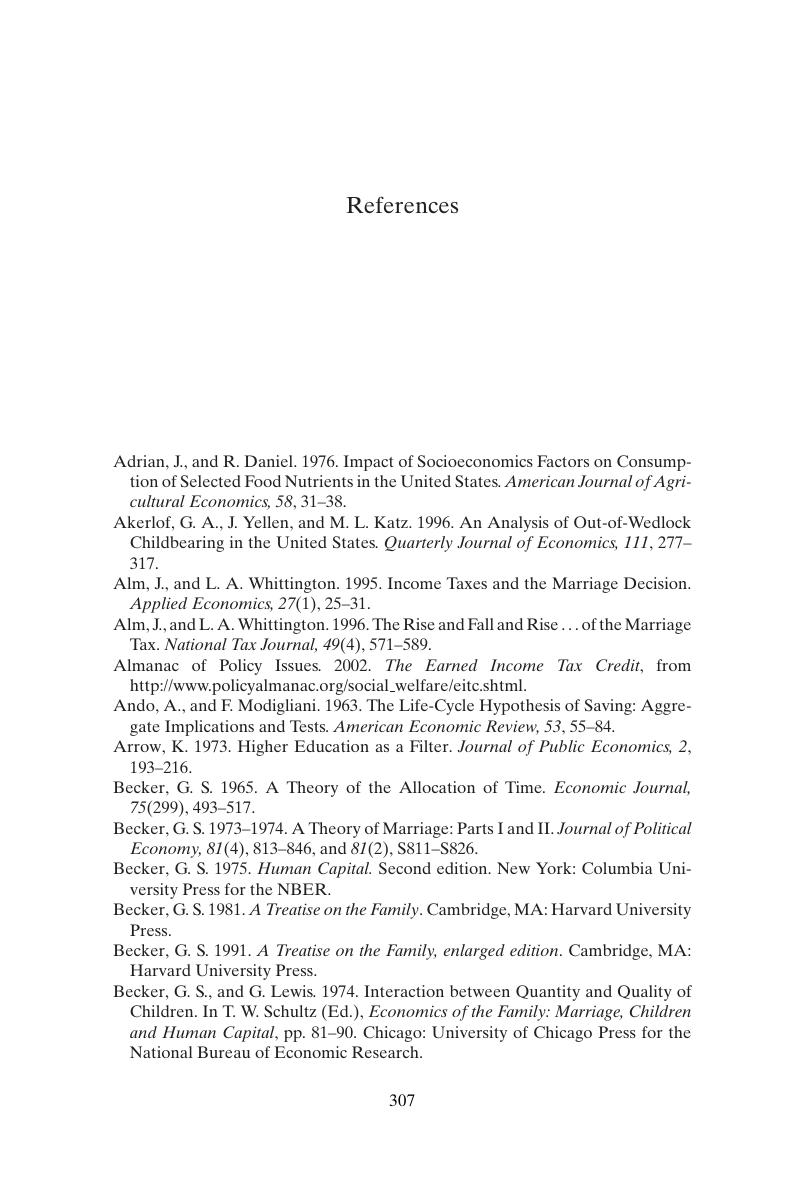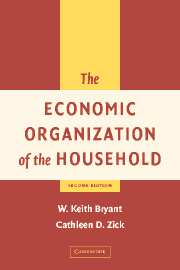Book contents
- Frontmatter
- Contents
- List of Figures
- Preface to the Second Edition
- 1 Introduction
- 2 Household Equilibrium
- 3 The Analysis of Consumer Demand
- 4 Consumption and Saving
- 5 Work and Leisure : How the Household Spends Its Time
- 6 Human Capital : Investing in Oneself and One's Family
- 7 The Economics of Fertility
- 8 The Economics of Marriage and Divorce
- References
- Index
- References
References
Published online by Cambridge University Press: 06 July 2010
- Frontmatter
- Contents
- List of Figures
- Preface to the Second Edition
- 1 Introduction
- 2 Household Equilibrium
- 3 The Analysis of Consumer Demand
- 4 Consumption and Saving
- 5 Work and Leisure : How the Household Spends Its Time
- 6 Human Capital : Investing in Oneself and One's Family
- 7 The Economics of Fertility
- 8 The Economics of Marriage and Divorce
- References
- Index
- References
Summary

- Type
- Chapter
- Information
- The Economic Organization of the Household , pp. 307 - 318Publisher: Cambridge University PressPrint publication year: 2005



